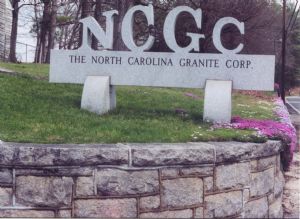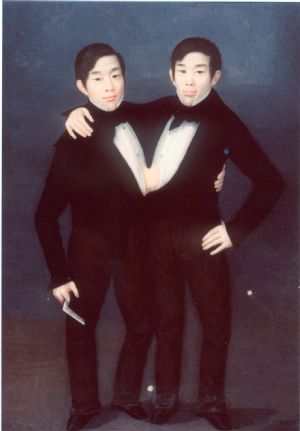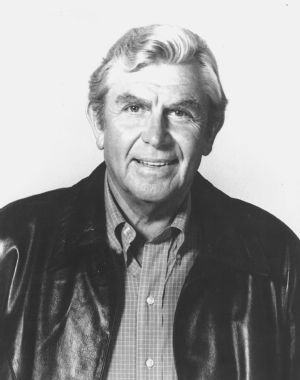 |
||||
|
|
||||
 Mount Airy, nicknamed "The Granite City," is home to the largest open face granite quarry in the world operated by the North Carolina Granite Corp. There are larger pit quarries throughout the world but no larger open face quarries. A pit quarry is below the surface, while an open face quarry is at ground level. Many of Mount Airy’s homes, churches, and businesses are made from Mount Airy granite. Since 1889, the quarry has been in full operation, and the surface has only just been scratched according to depth tests. Geologists say the deposit can be quarried for approximately 500 more years without exhausting the supply. The first settlers in and around what is today the town of Mount Airy in Surry County, North Carolina arrived in the mid-1740s. Map-makers Jefferson & Frye performed a detailed survey of the area in 1747 and they noted the names of at least three early inhabitants with the sunames of Loven, Mount, and Rentfrow - already there. Thomas Perkins bought from Surry’s most important citizen of his time, Martin Armstrong, his plantation home on the river, and he named it Mount Airy. The name stuck. The exact date when a town actually evolved and was recognized for more than one plantation home plus perhaps a few others is open to debate. Some folks insist it was in 1801, whereas other people believe it happened in the late 1790s. The US Post Office Department was satisfied that enough people had gathered there to warrant accepting an application for a US Post Office in Mount Airy on July 1, 1798, with the first Postmaster being Mr. John Lawrence on that date. Just because there was a US Post Office there doesn't mean that there was much of a town - but - it does indicate that the placename had already been chosen, certainly before 1801, and - the name stuck.  Most people have heard of the Siamese Twins, but do not realize that the original Siamese Twins made their home in Surry County and are buried in White Plains, which is six miles south of Mount Airy. The Twins were born in a fishing village in Siam, and it was their nationality that became the name for the condition in which two people are physically joined together. Other than being connected by a piece of flesh, the twins were completely normal and lived a relatively normal childhood. Although the people in their village originally feared the twins, eventually the community accepted them. In 1829 a Scottish trader, Robert Hunter, and New England sea captain, Abel Coffin, persuaded the twins to go abroad where they would be put on public display. The King of Siam granted the twins permission to leave the country. For the next eight years, they toured the United States and Europe under the auspices of Hunter and Coffin and later with P.T. Barnum. The twins always drew large crowds to watch them perform feats of strength and dexterity. The medical profession also continually conducted tests on them and speculated on the cause of their malady. Eng and Chang had planned to return to Siam, but eventually decided to become naturalized American citizens. Learning that a surname was a requirement for becoming naturalized, they selected the name Bunker. The twins also decided to begin touring on their own. When the twins visited Wilkesboro in 1837, they decided they were tired of touring and that they liked the area. By this time, they were financially successful. Two years later Eng and Chang stopped touring. They opened a general store in Traphill, which is near Wilkesboro. They also purchased land and began raising corn and hogs. Shortly after moving to Traphill, the twins made friends with two sisters, Adelaide and Sarah Yates. In 1843, Eng married Sarah, and Chang married Adelaide. The two families had twenty-one children. They eventually moved to Surry County and built two houses about a mile apart. The families of each of the twins stayed at their respective homes, while Eng and Chang took turns visiting every three days. They followed this routine until their deaths. Eng and Chang’s financial success continued until the AmericanCivil War when, like many, they suffered financial hardship. To rebuild their fortune, they decided to tour again with P.T. Barnum. They returned to Europe and hoped to find a doctor who would separate them. They returned to the United States in 1871 having again accumulated considerable sums of money, but had found no doctor to separate them. On the return voyage across the Atlantic, Chang suffered a stroke and partial paralysis. From that time, his health began to fail. On January 12, 1874, Chang was stricken with bronchitis. The condition grew worse; and he died in his sleep on January 17. Eng woke to find Chang dead. A doctor was summoned to try to perform a desperate operation, but Eng died before the doctor arrived. It was said that Eng, learning of his twin’s death, died of sheer terror. Their widows kept Eng and Chang’s bodies in the cellar for one year to protect them against grave robbers. They were later buried in the lawn of Chang’s house. In the late 1920s, their remains were moved to the White Plains Baptist Church cemetery. The twins had donated the land on which the church was built and helped with its construction. The fascination with the twins has continued over the years, and several books and plays have been written about their life. Many of Eng and Chang Bunkers’ descendants live in Surry County. The Robert Smith House and the Mount Airy Museum of Regional History have exhibits about the twins.  If you go online and look for anything pertaining to Mount Airy, you cannot miss the fact that Andy Griffith was born here. In fact, you won't learn much else. Andy Griffith’s hometown honors his successful career each year with an annual event called Mayberry Days, a festival of the Surry Arts Council that brings fans and friends from all over the county together. |
 |
 |
© 2007 - J.D. Lewis - PO Box 1188 - Little River, SC 29566 - All Rights Reserved